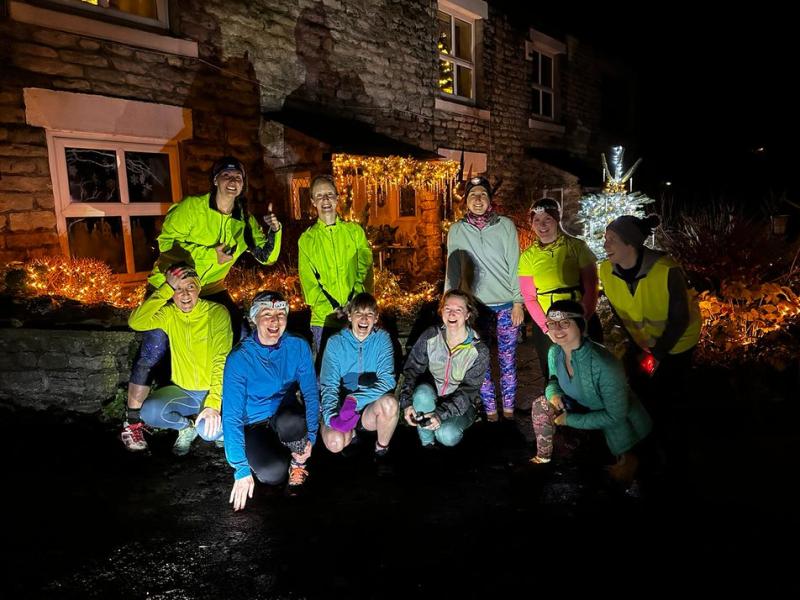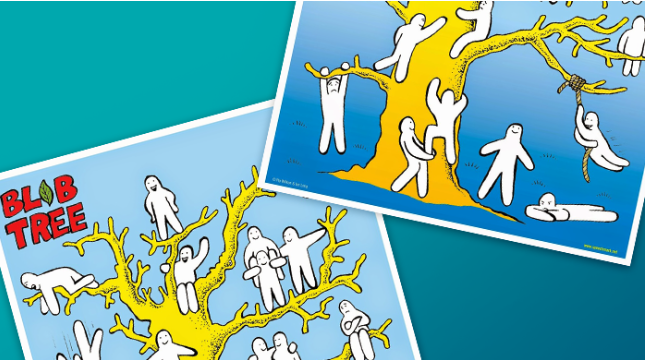Mandy Holden29 Mar 2023
Last spring, a group of women in my neighbourhood started a relaxed running group. They named it the Bamford Bimblers. Over the months, the group has grown and grown until it feels like more-or-less every local woman is part of the WhatsApp group. I joined in August, just before the nights started drawing in. Now every Monday evening, I charge up my head torch, look out at the rain bucketing down outside my window, steel myself and head out to the Green to meet my fellow Bimblers. Why?
- I like connecting with the people who happen to share the same patch of ground as me.
- The ethos of the group is inclusive, we run at a chilled pace, no one is left behind. Come as you are and bring whatever’s going on for you that day.
- It gets me outside and moving.
And what this adds up to, the one thing that keeps me wanting more, it just feels so damn good.
We should demand this feeling in our climate justice spaces. It’s a way of bringing the future we want to see into our lives right now.
Bringing joy into our work
In the Experiments team, we’ve been exploring ways to bring more of this feeling into our work and open our imaginations in the process. Particularly when we are working remotely, online.
In November, I joined a play session for sustainability professionals with Lego Serious Play Facilitator, Lucy Hawthorne. We dug into some really serious questions like ‘What would enable the organisations you work for move to take strong climate actions?’ through the medium of play – Lego play in this case.
Healthy discomfort
This session made me feel uncomfortable - in the best possible way. I felt a little scared, a little challenged, like I was entering the unknown. It wasn't possible to come prepared or have guaranteed outcomes. I think this is what's meant by a 'learning edge'. I felt safe but in healthy discomfort. I made connections and got clarity in a way that flowed naturally, rather than in a pressurised way centred on objectives or on a predefined pathway.
I am someone who likes to prepare in advance and wouldn’t describe myself as being good at thinking on my feet. The Lego play allowed me to tap into another part of my brain that freed me up.
What will I take back into our work?
Start with the silly or simple
Before getting stuck into the complex and probing, we all need to warm up. In Lucy’s session, we had to build a random Lego model using 5 pieces and then got put on the spot to describe how it could be different things. A sausage roll? Cycling? Wintering? Strong climate action? We spent over an hour on playful questions, before diving into more challenging topics.
Don't rush the process
I tried facilitating a half-hour session using Lego at a Friends of the Earth away-day and found this wasn’t enough time to create the psychological safety to tackle the big topics. The lesson - it takes the time it takes – so be expansive and don’t rush.
Get beyond what’s usually said
If we want to generate stronger, bolder, more radical climate action, we need to get beyond our reliance on the written and spoken word and established concepts. Play can get us thinking with our hands – kinaesthetically and listening with our eyes.
This approach can help us feel we’ve got our heads round the concept. In a different language, something has clicked. Even if it is still intangible and we can’t articulate it with words.
It’s about opening up and making space for other possible futures to emerge. Letting curiosity and perhaps even a deep longing for those futures to fill us up, nourish us and replenish us to act.
These are some key tactics.
How to use metaphor, improv and coaching
If one team member makes or draws something:
- What do you notice about it? How would you describe it? What does it bring to mind? What’s implied?
- If you meant to make a snowman, how could it represent a bottle of lemonade instead?
- What questions do you have about the model your teammate has made? How could they describe aspects of the model more fully?
Seeing something you’ve made/drawn described by another person is a really powerful way to uncover new ideas and perspectives.
In the same vein, we have tried using the Institute for the Future’s Equitable Futures Game to come up with new experiments. The most fruitful part of this was responding to a team challenge using the point of view of a new character - imagining a viewpoint not represented in our team e.g. a farmer, lawyer, religious leader. What might they want to know or test?
Create an ‘Imagination Infrastructure’ online
We should be taking as much care over the places where we gather remotely as we would in person and use placemaking skills to bring us together to learn and connect joyfully.
I have been inspired by Mona Ebdrup's and Suzy Glass’ Miro Worlds to break away from the constraints of Excel and Word and try to make our digital collaboration open, beautiful and generative.
These days, we try to unearth the tone, feel and sentiment of the project – so we know that the virtual space where we gather to explore that idea has the feel and texture of the work itself; creating the right setting for new learning.
We want to create dreamy spaces to gather and respond to half-formed thoughts and intangible stuff.
Miro can also create a space of silent contribution and reflection which levels the playing field for introverts. For facilitated sessions, where you want participants to respond to information or ideas, it’s worth presenting content in a range of ways e.g written, diagrammed, audio, video. "We’re not planning a meeting; we’re planning a harvest" Suzy says of her work in online facilitation.
Miro Worlds make it possible to harvest a library of content, share ideas and iterate through the whole design process in one expansive digital space.
Take a long lunch
Though we are finding great ways to be creative together online, we still love gathering in real life. Some of our most free-flowing and creative times are over a shared meal or a walk together (maybe even a wild swim thrown in for good measure).
Check-in (I mean really check-in)
It’s easy for check-ins to become routine. We remind ourselves regularly that they are important and the person holding space might need to flex and respond based on how people are feeling that day.
The Blob Tree is one of our favourites and I often return to https://tscheck.in/ for inspiration to ask more meaningful questions. Let’s make check-ins a real invitation to connect and genuinely welcome whatever’s going on for folk that day.
This great quote from Rob Hopkins captures what we want to cultivate:
"In order for the imagination to flourish, a person needs to feels safe, connected to other people, be nourished with good food, surrounded by hopeful narratives of the future, invited into what-if spaces, exposed to art in all its forms, not feel under surveillance or time pressured, in as equal society as possible, able to make meaningful contributions and exposed to nature as much as possible in their daily lives".
It’s something the Bimblers seem to have down to a T.
If you'd like to chat to us and learn more about how we apply creative tools to innovation practice, please get in touch.





